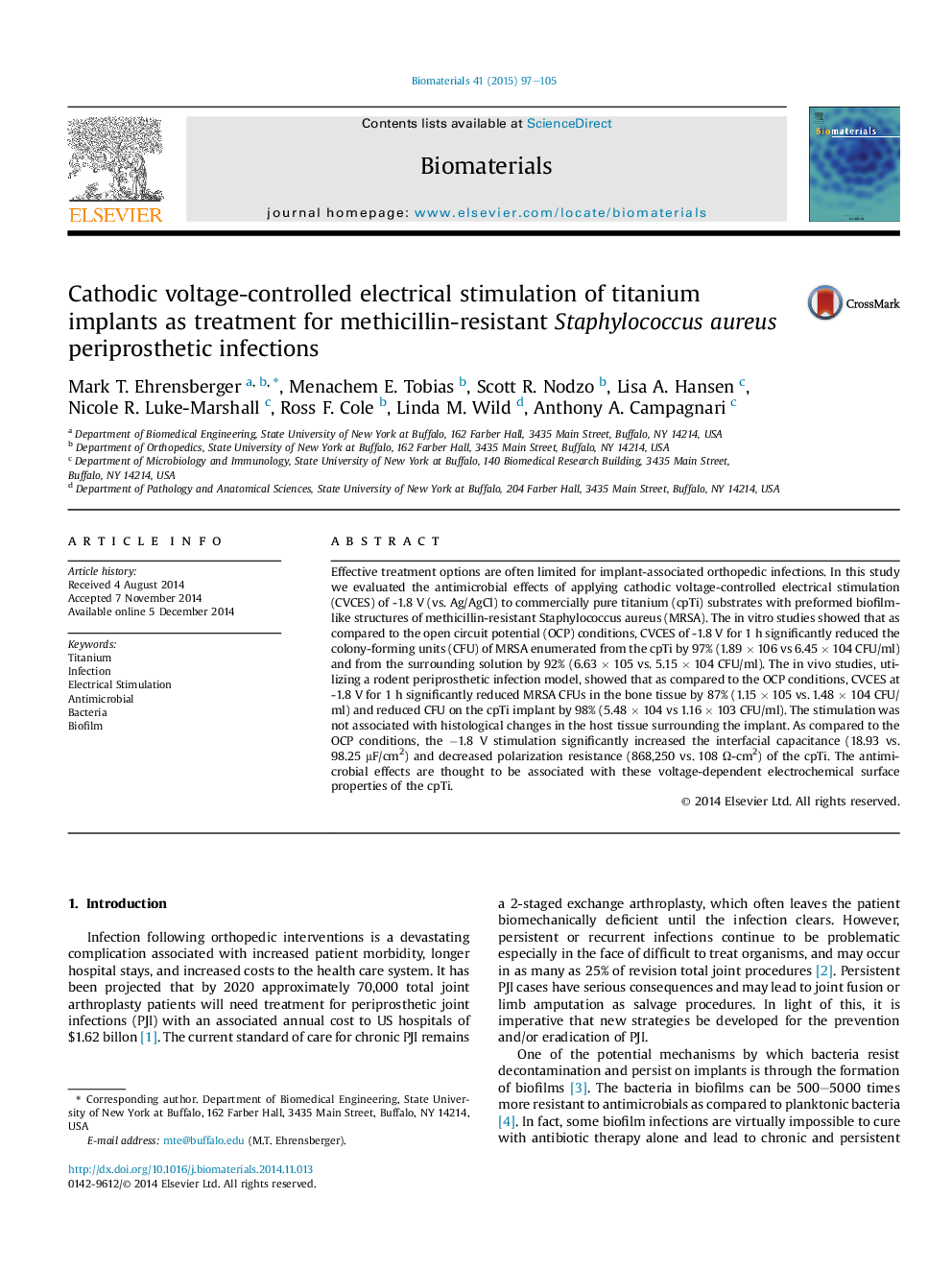| Article ID | Journal | Published Year | Pages | File Type |
|---|---|---|---|---|
| 6486289 | Biomaterials | 2015 | 9 Pages |
Abstract
Effective treatment options are often limited for implant-associated orthopedic infections. In this study we evaluated the antimicrobial effects of applying cathodic voltage-controlled electrical stimulation (CVCES) of -1.8 V (vs. Ag/AgCl) to commercially pure titanium (cpTi) substrates with preformed biofilm-like structures of methicillin-resistant Staphylococcus aureus (MRSA). The in vitro studies showed that as compared to the open circuit potential (OCP) conditions, CVCES of -1.8 V for 1 h significantly reduced the colony-forming units (CFU) of MRSA enumerated from the cpTi by 97% (1.89 Ã 106 vs 6.45 Ã 104 CFU/ml) and from the surrounding solution by 92% (6.63 Ã 105 vs. 5.15 Ã 104 CFU/ml). The in vivo studies, utilizing a rodent periprosthetic infection model, showed that as compared to the OCP conditions, CVCES at -1.8 V for 1 h significantly reduced MRSA CFUs in the bone tissue by 87% (1.15 Ã 105 vs. 1.48 Ã 104 CFU/ml) and reduced CFU on the cpTi implant by 98% (5.48 Ã 104 vs 1.16 Ã 103 CFU/ml). The stimulation was not associated with histological changes in the host tissue surrounding the implant. As compared to the OCP conditions, the â1.8 V stimulation significantly increased the interfacial capacitance (18.93 vs. 98.25 μF/cm2) and decreased polarization resistance (868,250 vs. 108 Ω-cm2) of the cpTi. The antimicrobial effects are thought to be associated with these voltage-dependent electrochemical surface properties of the cpTi.
Related Topics
Physical Sciences and Engineering
Chemical Engineering
Bioengineering
Authors
Mark T. Ehrensberger, Menachem E. Tobias, Scott R. Nodzo, Lisa A. Hansen, Nicole R. Luke-Marshall, Ross F. Cole, Linda M. Wild, Anthony A. Campagnari,
